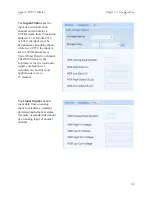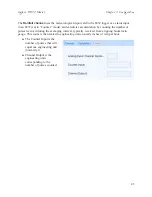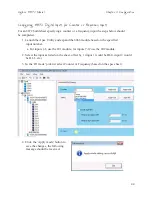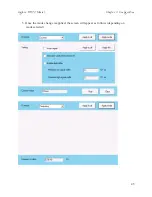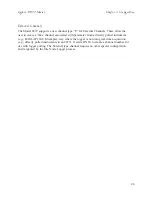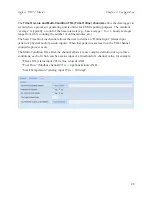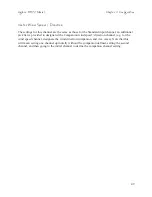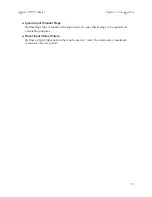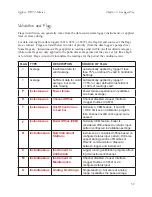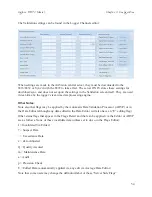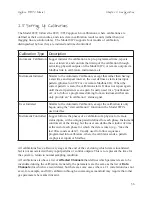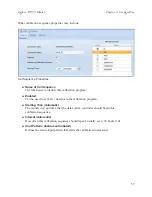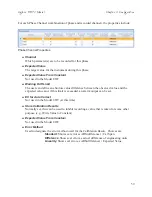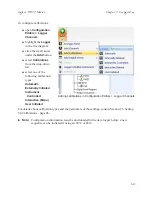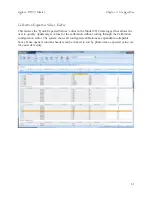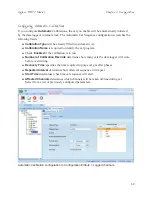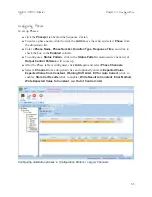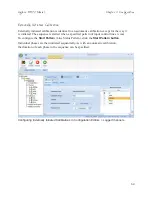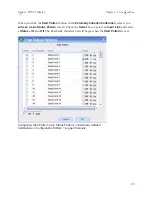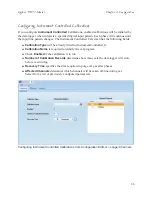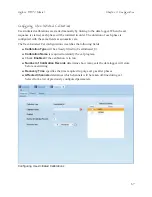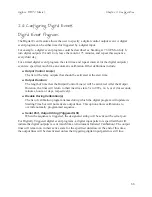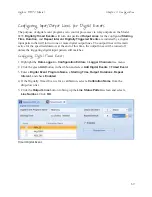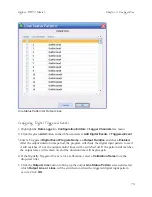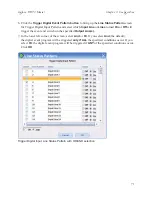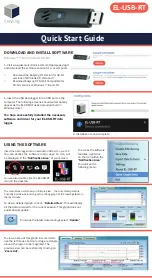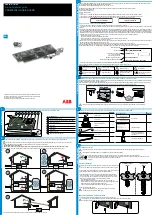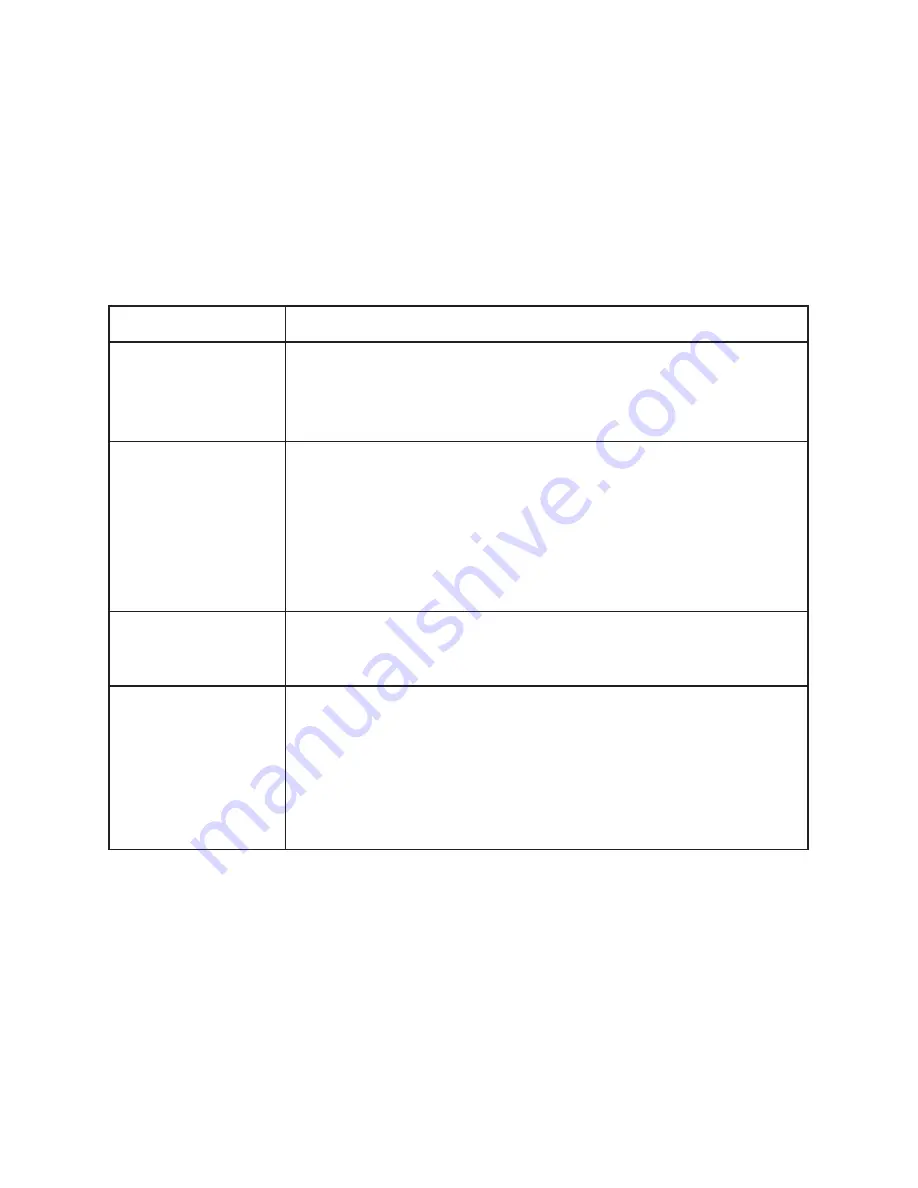
56
Agilaire 8872 Manual
Chapter 2 Configuration
2.5 Setting Up Calibrations
The Model 8872 follows the 8816 / 8832 approach to calibrations, where calibrations are
defined as their own entities, and store data in calibration result records (rather than just
flagging fine-resolution data). The Model 8872 supports four models of calibration,
distinguished by how they are initiated and timed/controlled:
Calibration Type Description
Automatic Calibration Logger initiates the calibration at a pre-programmed time, repeats
on a set interval, and controls the timing of the calibration through
activating physical outputs on the Model 8872, or remote outputs via
Modbus link to calibrators, instruments, etc.
Instrument Initiated
Similar to the Automatic Calibration, except that rather than having
a start time and repeat interval, the user defines a start status input
pattern (physical on 8872 or via remote Modbus I/O). When the
correct pattern is seen, the calibration starts. It does not repeat again
until the start pattern is seen again. Usually used for a “pushbutton”
cal, or to follow a programmed timing from an instrument that can
only provide an “in calibration” status signal.
User Initiated
Similar to the Automatic Calibration, except the calibration is only
begun using the “start calibration” function in the Model 8872’s
user interface.
Instrument Controlled Logger follows the phases of a calibration via physical or remote
status inputs, with a unique pattern defined for each phase. Instrument
controls all of the timing, but the user can define the window of time
at the end of each phase for which the data is taken (e.g., “take the
last 90 seconds as data”). Usually used to follow sequences
programmed into calibrators, where the calibrator sends a pattern
via physical inputs or Modbus.
All calibrations have a Recovery stage at the end of the cal, during which data is invalidated,
but is not associated with any input patterns or control outputs. This is to represent the time for
the system to return to normal sampling condition.
All calibrations also have a list of
Affected Channels
that defines which parameters are to be
invalidated during the calibration. Generally, the parameters are the same as the list of
Data
Channels
(for which we record data), but there are some cases where a 1:1 correlation does not
exist, for example, and SO2 calibration through a common gas manifold may require that other
gas parameters be marked invalid.

